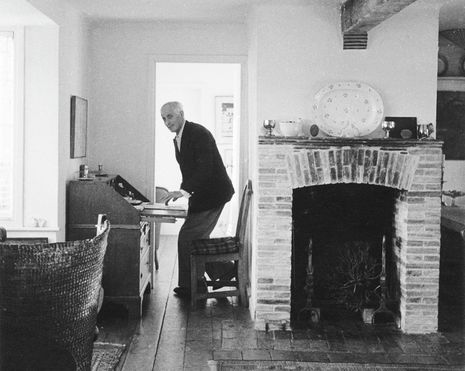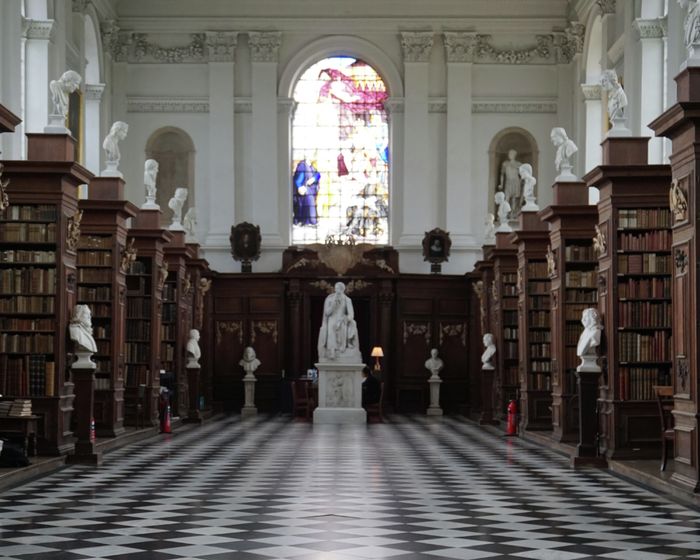‘Invite people in’: Jim Ede and the life behind Kettle’s Yard
Ben Birch delves into the history of Kettle’s Yard, and the man whose ‘homely exactness’ inspired it

Jim Ede is famous because of his extraordinarily good taste. The life of the man who curated and lived in Kettle’s Yard is a far from simple one. Harold Stanley Ede was born in 1895 in Penarth, just a few miles from Cardiff. It’s strange to think that he was born in the nineteenth century — in a place as old and storied as Cambridge, Kettle’s Yard has always felt incredibly modern. The child of middle-class Methodists, his mother was a teacher and his father a solicitor. Ede received an expensive education across the UK and went on to Edinburgh College of Art before the First World War arrived. He was commissioned as an officer in September 1914.
“Ede’s habit of arranging pebbles in a spiral is as much neurotic as it is meditative”
It’s a rather overworn truism to say that the First World War defined the art of the twentieth century. It might be fairer to say that the war left behind a generation of juvenilia, early works, and fragments — more artists’ lives were ended by the war than any number of survivors whose lives were defined by it. Nonetheless, it’s important to understand Kettle’s Yard in the context of Ede’s military service. He suffered from what’s called combat stress reaction or ‘battle neurosis’. This manifests itself in restlessness and irritability which grows to panic and rage. Kettle’s Yard, with its white-washed walls and homely exactness, is a reaction to this — Ede’s habit of arranging pebbles in a spiral is as much neurotic as it is meditative.
“Despite everything, Gaudier-Brzeska’s enduring legacy is a direct result of Ede’s belief in his own good taste”
After the war, he went to work at the Tate, or the National Gallery of British Art as it was known then. Jim’s contemporary tastes and unconventional approach placed him at loggerheads with his bosses immediately. The museum had refused to buy Picasso and had little interest in Ede’s acquisition of some of Van Gogh’s work. When proposing that the gallery buy the works of French sculptor Henri Gaudier-Brzeska, the higher ups at the Tate suggested that Ede should go and supervise the ongoing window-cleaning of the museum instead. Gaudier-Brzeska was one of those artists whose life was brutally curtailed by the war. He was killed in the trenches of northern France at only 23 years old. Ede wrote a biography of the artist called Savage Messiah which was later turned into a film by Ken Russell. Despite everything, Gaudier-Brzeska’s enduring legacy is a direct result of Ede’s pioneering and belief in his own good taste. Gaudier-Brzeska’s works are still dotted around Kettle’s Yard to this day.
It was at this time that Ede met the artists who would make up the bulk of his collection – Ben Nicholson, David Jones, Barbara Hepworth. He was a friend to Miró, Brancusi, and any artist who would be patient enough to give him the time of day. He would go on to leave the Tate, live in Tangiers, live out of a Buick with his wife while lecturing around the US, moved to a farmhouse in the Loire Valley, before moving to Cambridge in 1954. On returning to England, Ede wanted to live in a grand house, a mansion — he had always liked things he couldn’t afford and would often ‘sponge’ off his friends who lived in rural estates. Instead of this aristocratic fantasy, he moved into four slum cottages with an alleyway running between them which would become Kettle’s Yard.
“Kettle’s Yard might be called a museum, for there are a great many pictures there, and much sculpture. But there are also a lot of pebbles”
Kettle’s Yard opened in 1957, or, as Jim put it, they began to "invite people in". His curatorial style was unorthodox — he used to cycle around London with Ben Nicholson’s art under his arm and once cleaned the dust off a William Congdon painting by running it under the shower. As Ede put it: “Kettle’s Yard might be called a museum, for there are a great many pictures there, and much sculpture. But there are also a lot of pebbles.”
It’s worth remarking that Ede must’ve been a nightmare to live with, given his precise and obsessive style. His adoring, but no doubt long-suffering wife Helen accompanied him throughout everything. Her love of music can still be felt in Kettle’s Yard today — her Bechstein piano used to sit outside her room upstairs which has now been replaced with a Steinway towards the back of the house. She loved Schubert, Bach, Beethoven, and would choose records for her and Jim to listen to each evening. She died in her sleep in 1977 after her and Jim had spent the evening reading King Lear aloud to each other. Their closeness is perhaps what keeps Kettle’s Yard feeling like a home rather than a museum.
Jim Ede passed away in 1990. As his biographer Laura Freeman puts it, his life was the twentieth century. I think if we can take anything from Ede’s life it’s that Kettle’s Yard was created as a haven. His life was at times filled with violence and rejection, yet his home has been a source of calm and wisdom for so many in Cambridge.
 News / Cambridge study finds students learn better with notes than AI13 December 2025
News / Cambridge study finds students learn better with notes than AI13 December 2025 News / Cambridge Vet School gets lifeline year to stay accredited28 November 2025
News / Cambridge Vet School gets lifeline year to stay accredited28 November 2025 Science / Did your ex trip on King’s Parade? The science behind the ‘ick’12 December 2025
Science / Did your ex trip on King’s Parade? The science behind the ‘ick’12 December 2025 News / Uni Scout and Guide Club affirms trans inclusion 12 December 2025
News / Uni Scout and Guide Club affirms trans inclusion 12 December 2025 Arts / Modern Modernist Centenary: T. S. Eliot13 December 2025
Arts / Modern Modernist Centenary: T. S. Eliot13 December 2025








